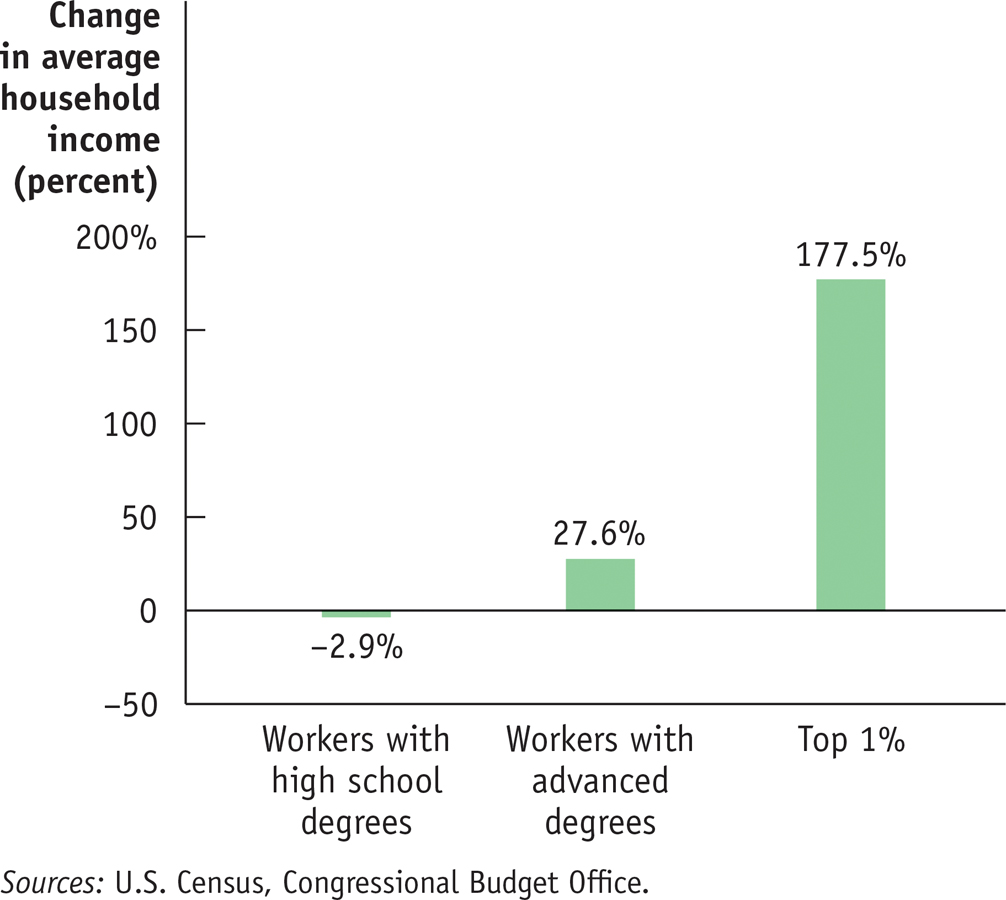So Does Marginal Productivity Theory Work?
The main conclusion you should draw from this discussion is that the marginal productivity theory of income distribution is not a perfect description of how factor incomes are determined but that it works pretty well. The deviations are important. But, by and large, in a modern economy with well-
It’s important to emphasize, once again, that this does not mean that the factor distribution of income is morally justified.
!worldview! ECONOMICS in Action: Marginal Productivity and the “1%”
Marginal Productivity and the “1%”
In the fall of 2011, there were widespread public demonstrations in the United States and in a number of other countries against the growing inequality of personal income. U.S. protestors, known as the Occupy Wall Street movement, adopted the slogan “We are the 99%” to emphasize the fact that the incomes of the top 1% of the population had grown much faster than those of most Americans.

Indeed, just as the protest movement was gathering strength, the Congressional Budget Office released a study on income inequality. The CBO found that, between 1979 and 2010, the income of the average household headed by a worker with a high school degree fell by 2.9%, while the income of the average household headed by a worker with an advanced degree rose by 27.6%. But the average income of the top 1% of households had risen 177.5%.
Why have the richest Americans been pulling away from the rest? The short answer is that the causes are a source of considerable dispute and continuing research. One thing is clear, however: this aspect of growing inequality can’t be explained simply in terms of the growing demand for highly educated labor. In this chapter’s opening story, we pointed out that there has been a growing wage premium for workers with advanced degrees. Yet despite this growing premium, as Figure 19-10 shows, such workers have seen only a fraction of the gains going to the top 1%.
This does not prove that the top 1% aren’t “earning” their incomes. It does show, however, that whatever the explanation for their huge gains, it’s not education.
Quick Review
Existing large disparities in wages both among individuals and across groups lead some to question the marginal productivity theory of income distribution.
Compensating differentials, as well as differences in the values of the marginal products of workers that arise from differences in talent, job experience, job status, and human capital, account for some wage disparities.
Market power, in the form of unions or collective action by employers, as well as the efficiency-
wage model, in which employers pay an above- equilibrium wage to induce better performance, also explain how some wage disparities arise. Discrimination has historically been a major factor in wage disparities. Market competition tends to work against discrimination. But discrimination can leave a long-
lasting legacy of diminished human capital acquisition.
19-3
Check Your Understanding
Question 19.4
Assess each of the following statements. Do you think they are true, false, or ambiguous? Explain.
The marginal productivity theory of income distribution is inconsistent with the presence of income disparities associated with gender, race, or ethnicity.
Companies that engage in workplace discrimination but whose competitors do not are likely to have lower profits as a result of their actions.
Workers who are paid less because they have less experience are not the victims of discrimination.
Solutions appear at back of book.